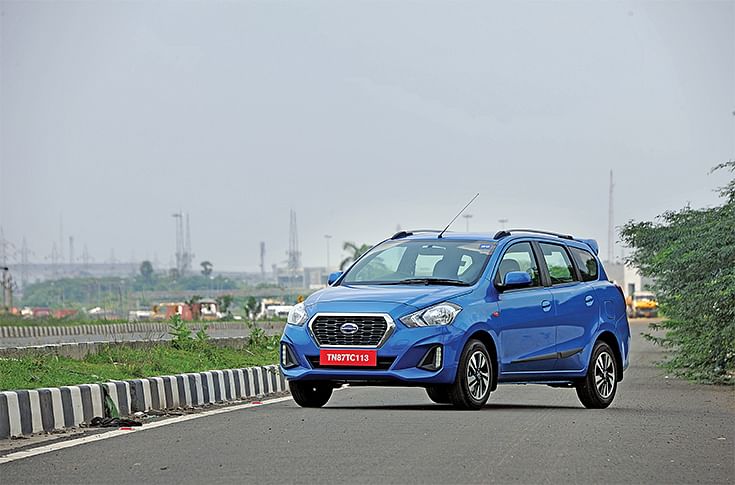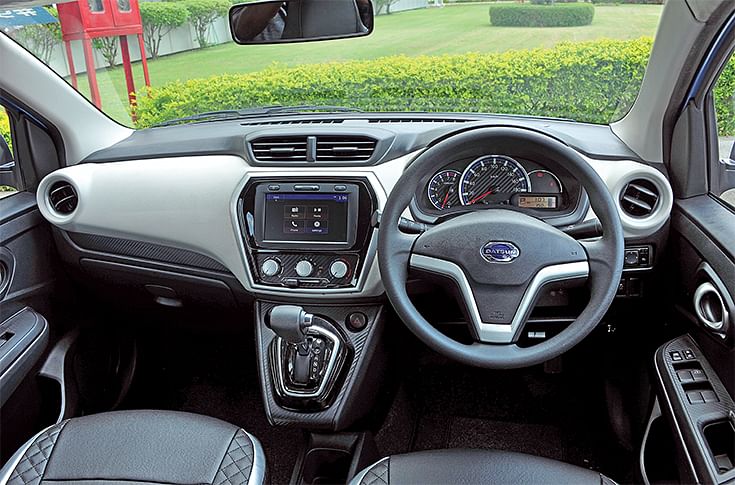Datsun gears up to shift buyers to CVT- fitted Go, Go+
Datsun, the budget-car brand from the Renault-Nissan Alliance is hopeful of riding on the growing demand for automatics. It is now offering a CVT even in the entry-level segment with its Datsun Go and Go+.
Nissan Motor India, which is reeling under tremendous pressure in the price-competitive Indian passenger vehicle market with a lackadaisical model line-up and plummeting footfalls at its dealerships, many of which are on the verge of shutdown, is looking for some sort of a survival strategy. The Japanese carmaker has little to show from 14 years of its presence: a mere 0.73 percent market share in the April-August 2019 period with sales of just 8,070 units.
In FY2014, the company, under the Renault-Nissan Alliance, made an ambitious entry into the mass-market segment with introduction of its reborn global budget-car brand Datsun. At the time, it was felt that India, where the car-to-people ratio still lags behind the developed world at 20 per thousand, would be a good starting point. This was part of the Group's global strategy to operate it as a low-cost brand for emerging markets, which led to its first India launch in March 2014 in the form of the Datsun Go hatchback.
While the Go and Go+ — the extended version of the hatchback launched a year later to seat seven — never really caught the attention of the masses in a segment which has always been a Maruti Suzuki stronghold, Nissan has since tried hard to revive sales of these two.
CVT offers a smooth driving experience within city limits but struggles during quick overtaking manoeuvres even in sport mode.
What impacted sales were Global NCAP’s crash tests conducted in 2014 under its ‘Safer Cars for India’ campaign. These saw the Go being declared highly unstable, to the extent that even putting airbags in the car would not make any difference to occupant safety which had been supremely compromised in order to stick to strict cost targets. A bad start then? Indeed.
Eventually, four years later, the company introduced the facelift versions of the two models, arguably reinforcing the body structures and also equipping all variants of the cars with dual frontal airbags, ABS with EBD, rear parking sensors, as well as bringing in ESC or vehicle dynamic control (VDC) in Datsun-speak as optional kit to the top trims.
All these efforts notwithstanding, consumers refused to bite and till end-August 2019, the Go hatchback has sold a total of 47,161 units (since March 2014) and the Go+ MPV has 32,694 units to its name (since January 2015). And, both are petrol-engined models only, so there was no hit on diesel sales whatsoever.
Eyeing a CVT spot in the entry-level market
Now, Datsun is making yet another attempt to draw buyers to its first two cars in India. This time around, it hopes to ride on the emerging consumer demand for automatic gearbox-equipped models, even in the entry-level PV segment. According to the company, automatic transmissions have shown a remarkable growth in the past few years. In FY2018, over 100,000 such cars were sold in the entry-level hatchback segment, recording 13 percent year-on-year growth. Interestingly, it is the Datsun Redigo, Renault Kwid, Alto K10 and the Maruti Celerio, which are the sole automatic options in this space with their built-to-cost AMT units.
Datsun Go+ offers good feel with decent plastics
Datsun India has now spotted an opportunity to position the automatic versions of the Go and the Go+ as slightly premium offerings in a pool of AMTs by introducing the relatively smoother CVT (continuously variable transmission).
The CVT-equipped Go and Go+, which now get the more powerful engine and CVT combination from elder sibling Nissan Micra, are set to be launched soon as the most affordable proper automatics.
The Datsun Go and Go+ CVT come mated to a 1.2-litre, three-cylinder 77bhp petrol engine, which is BS IV compliant as of now and offers more pep compared to the 68bhp produced by the 1.2-litre three-cylinder unit present on the manual versions of the two cars.
Having to comply with the mandatory crash regulations for all models from October 2019, Datsun has further reinforced the body structures of the two cars to make them pass the frontal and side-offset crash tests as well as be prepared for the pedestrian protection norms due in October 2020. This has resulted in a weight increment of 40kg on the new versions (including manual variants).
Do they have the go to match the CVT show?
This correspondent drove the two cars in Chennai to find out how the new transmission performs. The test route comprised a mix of city and highway driving from the airport to Renault-Nissan’s sprawling plant in Oragadam. This gave ample time and various scenarios to gauge their performance. Given the step-less nature of the transmission, the Datsun Go and Go+ move off the block in a rather smooth fashion and come up to city speeds quite effortlessly with none of the jerks associated with gear shifts in an AMT.
Datsun Go and Go+ comes with new 7.0-inch touchscreen infotainment system lifts up ambience.
Driving sedately raises no concerns as both Datsuns amble along well in the city. However, what's annoying is that the CVT is prone to a significant rubber-band effect; anything more than gentle throttle inputs will unsettle the transmission, leading to immense noise from the engine owing to increase in its rpm without any corresponding gain of pace, which limits highway usage and also makes the experience cumbersome while aiming to close quick gaps in city traffic.
The automatic Datsuns are best driven in a calm manner within the city, where a gentle foot makes the gearbox respond well enough to keep pace with the traffic and offers a fatigue-free driving experience. On the highway, the cars' light build quality is still evident and does not inspire much confidence, even though safety features are present in full force. Plentiful blind spots originating from inadequately sized ORVMs and hindered visibility from the pillars don't help either.
So, as city runabouts, the cars do make a case for themselves offering a smooth driving experience and with respectable claimed fuel efficiency figures of 20.07kpl for the Go and 19.41kpl for the bigger Go Plus. Also, with Datsun offering speed-sensing auto door locks and a newer 7-inch touchscreen infotainment system which supports Android Auto and Apple CarPlay and now comes with physical buttons for operation as well, the cabin experience is nice for the price too.
However, the Datsun Go and Go+ will have a tough task matching up to the reliability, dealer network and resale value offered by aggressively priced cars such as the Tiago AMT and the Wagon R AMT, which also provide a largely acceptable driving experience in this segment. While Datsun is pushing hard to gain customer trust by offering up to five years of warranty on its cars, a lot would rest on the pricing as well, which will decide in which direction its market share is headed in India.
(This article was first featured in the October 15, 2019 issue of Autocar Professional)
RELATED ARTICLES
Tata Motors: From Ice Legacy To Electric Intelligence
Tata Motors has a lot riding on the newly launched Harrier EV, coming as it does on a fresh, EV-oriented software platfo...
Complete List of Cars and SUVs Tested by Bharat NCAP
Bharat NCAP has crash-tested 20 models to date, including both ICE-powered vehicles and EVs.
Belrise Industries: A Story of Grit and Focus
The Belrise Industries IPO is the culmination of a multi-decade journey by entrepreneur Shrikant Badve that started in a...





 15 Nov 2019
15 Nov 2019
 2942 Views
2942 Views










 Ketan Thakkar
Ketan Thakkar



 Shahkar Abidi
Shahkar Abidi

